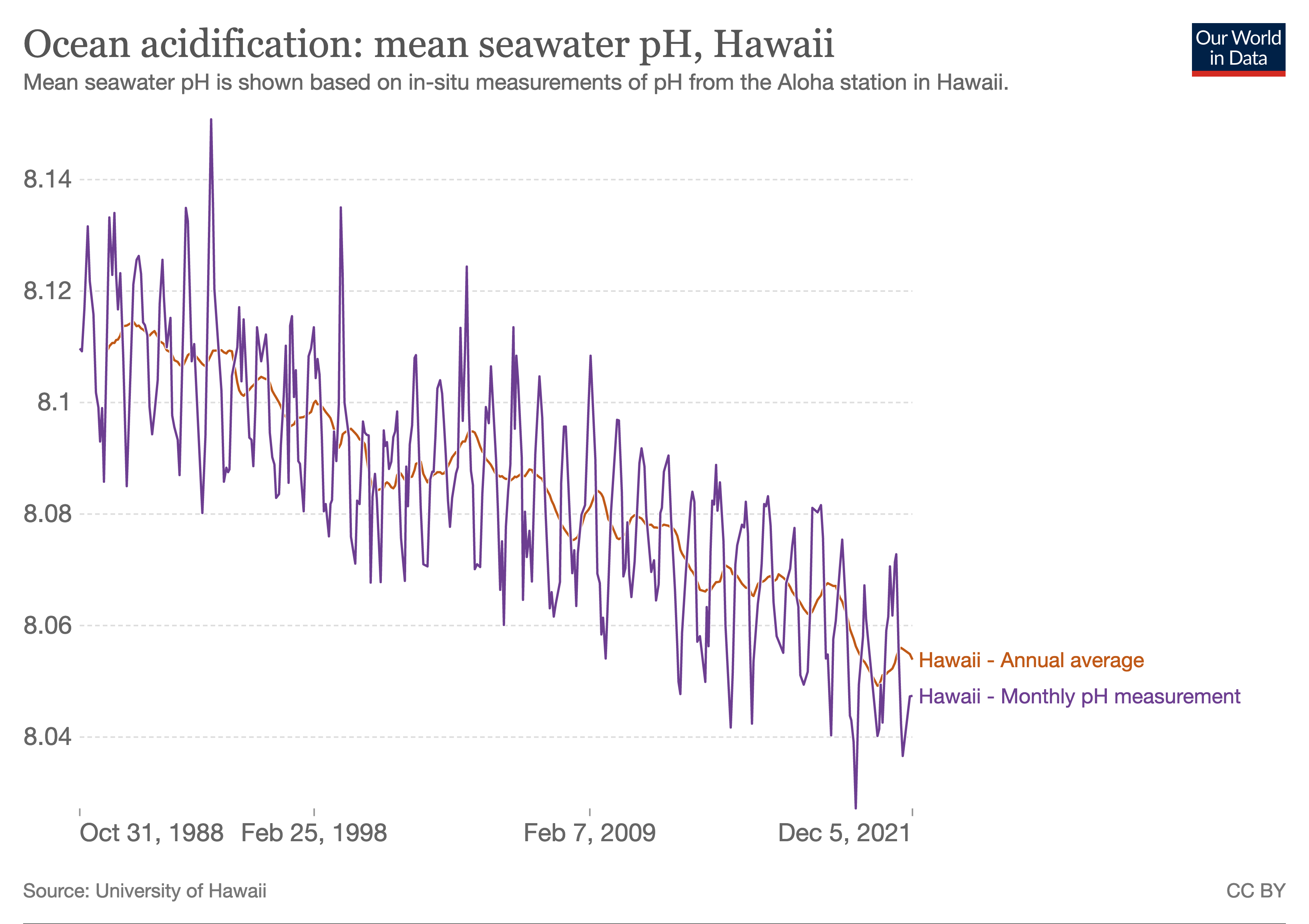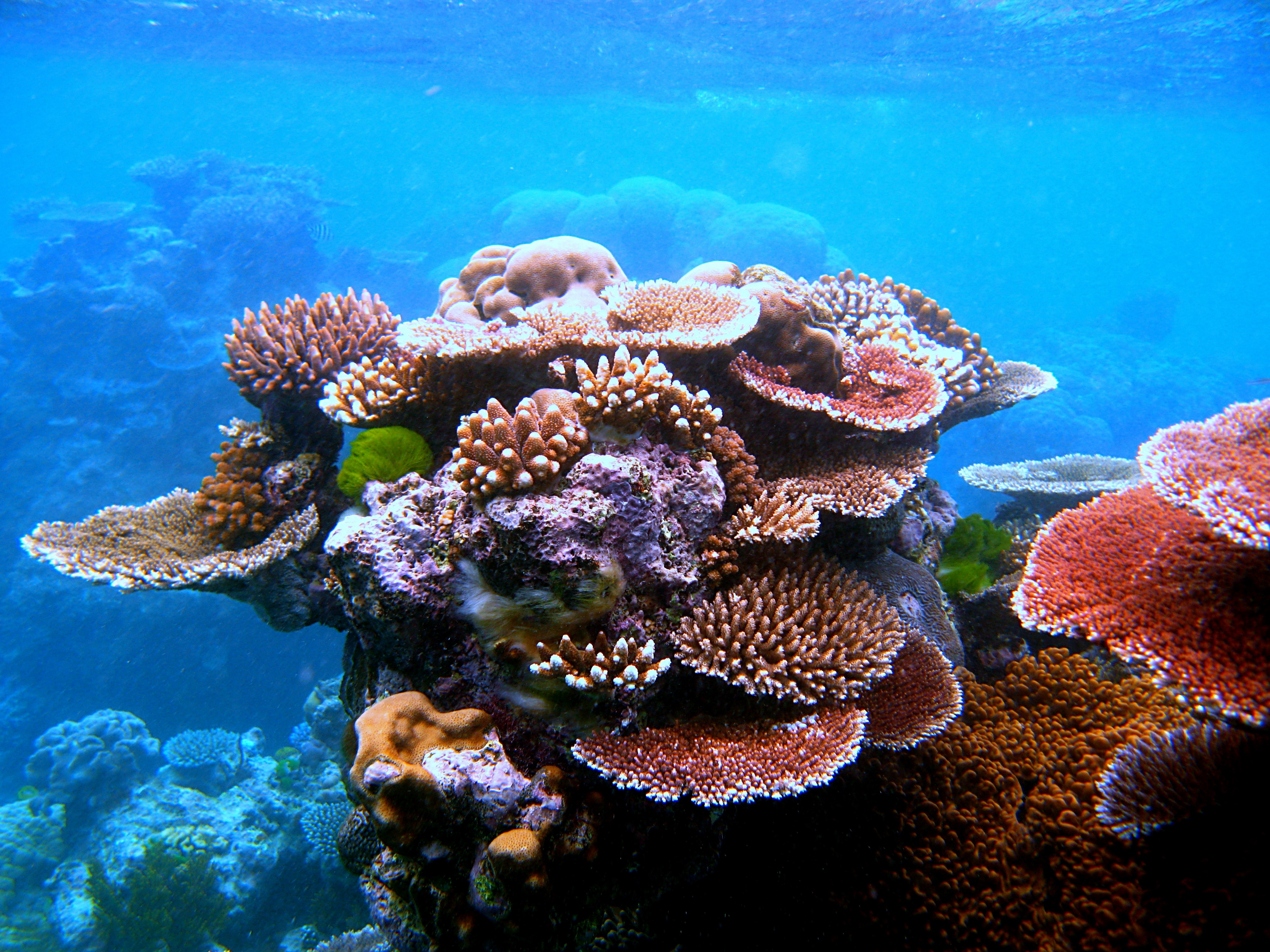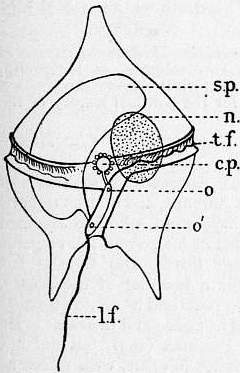|
Homophyllia Bowerbanki
''Homophyllia bowerbanki'' is a vulnerable species of coral found in the Pacific and Indian Oceans. This species is moderately common, but it is threatened by crown-of-thorns starfish predation and habitat loss. Description ''Homophyllia bowerbanki'' is a small, encrusting coral but occasionally reach a diameter of over . The corallites are cerioid and have irregular shapes, and there is usually an obvious central one. The colour is often mottled and is generally reddish-brown, brown or grey. The corallites are irregularly shaped and may be arranged singly or in short valleys with continuous walls containing several corallites. The polyps are still fleshy when retracted. Distribution It is found in the Pacific and Indian Oceans from Australia to Japan and Kiribati. Biology ''Homophyllia bowerbanki'' is a zooxanthellate species of coral. It obtains most of its nutritional needs from the symbiotic dinoflagellates that live inside its soft tissues. These photosynthetic organisms p ... [...More Info...] [...Related Items...] OR: [Wikipedia] [Google] [Baidu] |
Vulnerable Species
A vulnerable species is a species which has been categorized by the International Union for Conservation of Nature as being threatened with extinction unless the circumstances that are threatening its survival and reproduction improve. Vulnerability is mainly caused by habitat loss or destruction of the species' home. Vulnerable habitat or species are monitored and can become increasingly threatened. Some species listed as "vulnerable" may be common in captivity, an example being the military macaw. There are currently 5196 animals and 6789 plants classified as Vulnerable, compared with 1998 levels of 2815 and 3222, respectively. Practices such as cryoconservation of animal genetic resources have been enforced in efforts to conserve vulnerable breeds of livestock specifically. Criteria The International Union for Conservation of Nature uses several criteria to enter species in this category. A taxon is Vulnerable when it is not critically endangered or Endangered but ... [...More Info...] [...Related Items...] OR: [Wikipedia] [Google] [Baidu] |
Plankton
Plankton are the diverse collection of organisms found in water (or air) that are unable to propel themselves against a current (or wind). The individual organisms constituting plankton are called plankters. In the ocean, they provide a crucial source of food to many small and large aquatic organisms, such as bivalves, fish and whales. Marine plankton include bacteria, archaea, algae, protozoa and drifting or floating animals that inhabit the saltwater of oceans and the brackish waters of estuaries. Freshwater plankton are similar to marine plankton, but are found in the freshwaters of lakes and rivers. Plankton are usually thought of as inhabiting water, but there are also airborne versions, the aeroplankton, that live part of their lives drifting in the atmosphere. These include plant spores, pollen and wind-scattered seeds, as well as microorganisms swept into the air from terrestrial dust storms and oceanic plankton swept into the air by sea spray. Though m ... [...More Info...] [...Related Items...] OR: [Wikipedia] [Google] [Baidu] |
Lobophylliidae
Lobophylliidae is a family of large polyp stony corals. The family was created in 2009 after a revision of the "robust" families of Faviidae, Merulinidae, Mussidae and Pectiniidae, which had been shown to be polyphyletic. The family Lobophylliidae was formed out of the Indo-Pacific species that had traditionally been included in Mussidae, and some of the species which had previously formed Pectiniidae, the remaining species from Pectiniidae having been merged into Merulinidae. The type genus is '' Lobophyllia''. Taxonomy The "robust" stony coral families of Faviidae, Merulinidae, Mussidae and Pectiniidae, have traditionally been recognised on morphological grounds but recent molecular analysis has shown that these families are polyphyletic, the similarities between the species having occurred through convergent evolution. Additionally, some traditional genera such as ''Favia'' and '' Scolymia'' have been found to be polyphyletic, with the Atlantic faviids and scolymids being m ... [...More Info...] [...Related Items...] OR: [Wikipedia] [Google] [Baidu] |
CITES Appendix II
CITES (shorter name for the Convention on International Trade in Endangered Species of Wild Fauna and Flora, also known as the Washington Convention) is a multilateral treaty to protect endangered plants and animals from the threats of international trade. It was drafted as a result of a resolution adopted in 1963 at a meeting of members of the International Union for Conservation of Nature (IUCN). The convention was opened for signature in 1973 and CITES entered into force on 1 July 1975. Its aim is to ensure that international trade (import/export) in specimens of animals and plants included under CITES, does not threaten the survival of the species in the wild. This is achieved via a system of permits and certificates. CITES affords varying degrees of protection to more than 38,000 species. , Secretary-General of CITES is Ivonne Higuero. Background CITES is one of the largest and oldest conservation and sustainable use agreements in existence. There are three working lang ... [...More Info...] [...Related Items...] OR: [Wikipedia] [Google] [Baidu] |
Near-threatened Species
A near-threatened species is a species which has been categorized as "Near Threatened" (NT) by the International Union for Conservation of Nature as that may be vulnerable to endangerment in the near future, but it does not currently qualify for the threatened status. The IUCN notes the importance of re-evaluating near-threatened taxon at appropriate intervals. The rationale used for near-threatened taxa usually includes the criteria of vulnerable which are plausible or nearly met, such as reduction in numbers or range. Near-threatened species evaluated from 2001 onwards may also be ones which are dependent on conservation efforts to prevent their becoming threatened, whereas before this conservation-dependent species were given a separate category ("Conservation Dependent"). Additionally, the 402 conservation-dependent taxa may also be considered near-threatened. IUCN Categories and Criteria version 2.3 Before 2001, the IUCN used the version 2.3 Categories and Criteri ... [...More Info...] [...Related Items...] OR: [Wikipedia] [Google] [Baidu] |
International Union For Conservation Of Nature
The International Union for Conservation of Nature (IUCN; officially International Union for Conservation of Nature and Natural Resources) is an international organization working in the field of nature conservation and sustainable use of natural resources. It is involved in data gathering and analysis, research, field projects, advocacy, and education. IUCN's mission is to "influence, encourage and assist societies throughout the world to conserve nature and to ensure that any use of natural resources is equitable and ecologically sustainable". Over the past decades, IUCN has widened its focus beyond conservation ecology and now incorporates issues related to sustainable development in its projects. IUCN does not itself aim to mobilize the public in support of nature conservation. It tries to influence the actions of governments, business and other stakeholders by providing information and advice and through building partnerships. The organization is best known to the wider p ... [...More Info...] [...Related Items...] OR: [Wikipedia] [Google] [Baidu] |
Ocean Acidification
Ocean acidification is the reduction in the pH value of the Earth’s ocean. Between 1751 and 2021, the average pH value of the ocean surface has decreased from approximately 8.25 to 8.14. The root cause of ocean acidification is carbon dioxide emissions from human activities which have led to atmospheric carbon dioxide (CO2) levels of more than 410 ppm (in 2020). The oceans absorb CO2 from the atmosphere. This leads to the formation of carbonic acid (H2CO3) which dissociates into a bicarbonate ion () and a hydrogen ion (H+). The free hydrogen ions (H+) decrease the pH of the ocean, therefore increasing acidity (this does not mean that seawater is acidic yet; it is still alkaline, with a pH higher than 8). A decrease in pH corresponds to a decrease in the concentration of carbonate ions, which are the main building block for calcium carbonate (CaCO3) shells and skeletons. Marine calcifying organisms, like mollusks, oysters and corals, are particularly affected by this ... [...More Info...] [...Related Items...] OR: [Wikipedia] [Google] [Baidu] |
Climate Change
In common usage, climate change describes global warming—the ongoing increase in global average temperature—and its effects on Earth's climate system. Climate change in a broader sense also includes previous long-term changes to Earth's climate. The current rise in global average temperature is more rapid than previous changes, and is primarily caused by humans burning fossil fuels. Fossil fuel use, deforestation, and some agricultural and industrial practices increase greenhouse gases, notably carbon dioxide and methane. Greenhouse gases absorb some of the heat that the Earth radiates after it warms from sunlight. Larger amounts of these gases trap more heat in Earth's lower atmosphere, causing global warming. Due to climate change, deserts are expanding, while heat waves and wildfires are becoming more common. Increased warming in the Arctic has contributed to melting permafrost, glacial retreat and sea ice loss. Higher temperatures are also causin ... [...More Info...] [...Related Items...] OR: [Wikipedia] [Google] [Baidu] |
Crown Of Thorns
According to the New Testament, a woven crown of thorns ( or grc, ἀκάνθινος στέφανος, akanthinos stephanos, label=none) was placed on the head of Jesus during the events leading up to his crucifixion. It was one of the instruments of the Passion, employed by Jesus' captors both to cause him pain and to mock his claim of authority. It is mentioned in the gospels of Matthew (Matthew 27:29), Mark (Mark 15:17) and John (John 19:2, 19:5), and is often alluded to by the early Church Fathers, such as Clement of Alexandria, Origen and others, along with being referenced in the apocryphal Gospel of Peter. Since at least around the year 400 AD, a relic believed by many to be the crown of thorns has been venerated. In 1238, the Latin Emperor Baldwin II of Constantinople yielded the relic to French King Louis IX. It was kept in the Notre-Dame Cathedral in Paris until 15 April 2019, when it was rescued from a fire and moved to the Louvre Museum. As a reli ... [...More Info...] [...Related Items...] OR: [Wikipedia] [Google] [Baidu] |
Photosynthesis
Photosynthesis is a process used by plants and other organisms to convert light energy into chemical energy that, through cellular respiration, can later be released to fuel the organism's activities. Some of this chemical energy is stored in carbohydrate molecules, such as sugars and starches, which are synthesized from carbon dioxide and water – hence the name ''photosynthesis'', from the Greek ''phōs'' (), "light", and ''synthesis'' (), "putting together". Most plants, algae, and cyanobacteria perform photosynthesis; such organisms are called photoautotrophs. Photosynthesis is largely responsible for producing and maintaining the oxygen content of the Earth's atmosphere, and supplies most of the energy necessary for life on Earth. Although photosynthesis is performed differently by different species, the process always begins when energy from light is absorbed by proteins called reaction centers that contain green chlorophyll (and other colored) pigments/chromoph ... [...More Info...] [...Related Items...] OR: [Wikipedia] [Google] [Baidu] |
Coral
Corals are marine invertebrates within the class Anthozoa of the phylum Cnidaria. They typically form compact colonies of many identical individual polyps. Coral species include the important reef builders that inhabit tropical oceans and secrete calcium carbonate to form a hard skeleton. A coral "group" is a colony of very many genetically identical polyps. Each polyp is a sac-like animal typically only a few millimeters in diameter and a few centimeters in height. A set of tentacles surround a central mouth opening. Each polyp excretes an exoskeleton near the base. Over many generations, the colony thus creates a skeleton characteristic of the species which can measure up to several meters in size. Individual colonies grow by asexual reproduction of polyps. Corals also breed sexually by spawning: polyps of the same species release gametes simultaneously overnight, often around a full moon. Fertilized eggs form planulae, a mobile early form of the coral polyp which, when matu ... [...More Info...] [...Related Items...] OR: [Wikipedia] [Google] [Baidu] |
Dinoflagellate
The dinoflagellates (Greek δῖνος ''dinos'' "whirling" and Latin ''flagellum'' "whip, scourge") are a monophyletic group of single-celled eukaryotes constituting the phylum Dinoflagellata and are usually considered algae. Dinoflagellates are mostly marine plankton, but they also are common in freshwater habitats. Their populations vary with sea surface temperature, salinity, and depth. Many dinoflagellates are photosynthetic, but a large fraction of these are in fact mixotrophic, combining photosynthesis with ingestion of prey ( phagotrophy and myzocytosis). In terms of number of species, dinoflagellates are one of the largest groups of marine eukaryotes, although substantially smaller than diatoms. Some species are endosymbionts of marine animals and play an important part in the biology of coral reefs. Other dinoflagellates are unpigmented predators on other protozoa, and a few forms are parasitic (for example, '' Oodinium'' and '' Pfiesteria''). Some dinoflagell ... [...More Info...] [...Related Items...] OR: [Wikipedia] [Google] [Baidu] |






